16 Incredible & Unique Monarch Butterfly Facts
-
Kristin Hitchcock
- Last updated:
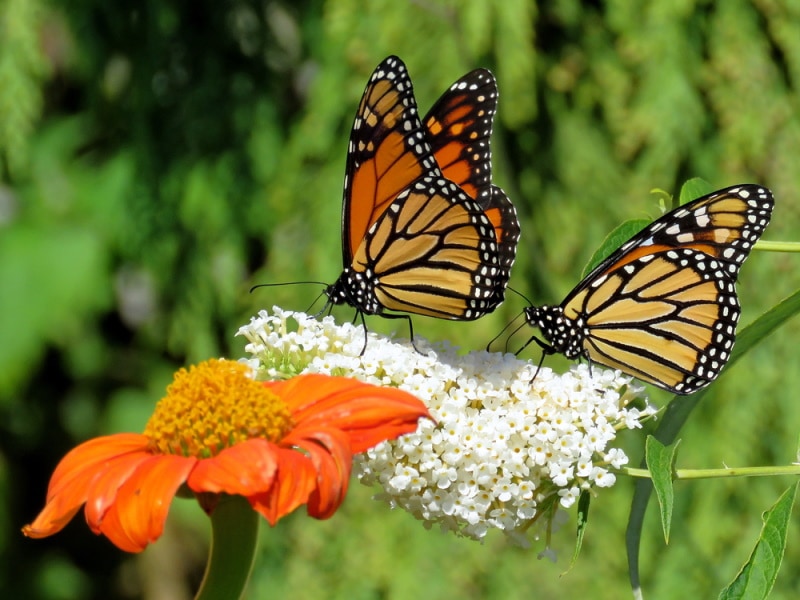
Out of all the butterflies in the world, the Monarch butterfly is one of the most heavily studied and recognizable. This species is best known for its awe-inspiring yearly migration, where a butterfly may travel thousands of miles.
They are also endangered, mainly because they rely on a single plant to thrive. Without this plant, the species cannot lay eggs and raise caterpillars to adulthood. Therefore, as the milkweed suffers, this species suffers, as well.
However, there is a lot that the average person doesn’t know about the Monarch butterfly. To find out more, keep reading.
The 16 Monarch Butterfly Facts
1. Not All Monarchs Migrate
Not all Monarch butterflies migrate. Instead, only the migratory subspecies make this trek each year. Otherwise, the butterflies stay put in one area. It is only this migratory species that are endangered. The “normal” Monarch is categorized as least concern.
2. Pollinator (or not)
The Monarch butterfly is known for being very effective at pollinating other plants. Therefore, their survival helps other plants survive, too. However, they are not very effective pollinators of the milkweed plant, which is what the caterpillars rely on to eat.
Therefore, while they can pollinate other plants, they don’t do a very good job pollinating the plants they rely on.
3. Mimicry
The Monarch butterfly is mimicked by the viceroy butterfly. Therefore, they are often confused for each other. However, the viceroy butterfly is much smaller and has an extra black stripe. It’s a pretty close resemblance, but it isn’t exact.
You often do have to get close to tell the difference, though. Therefore, it is often hard to properly ID these butterflies in the field.
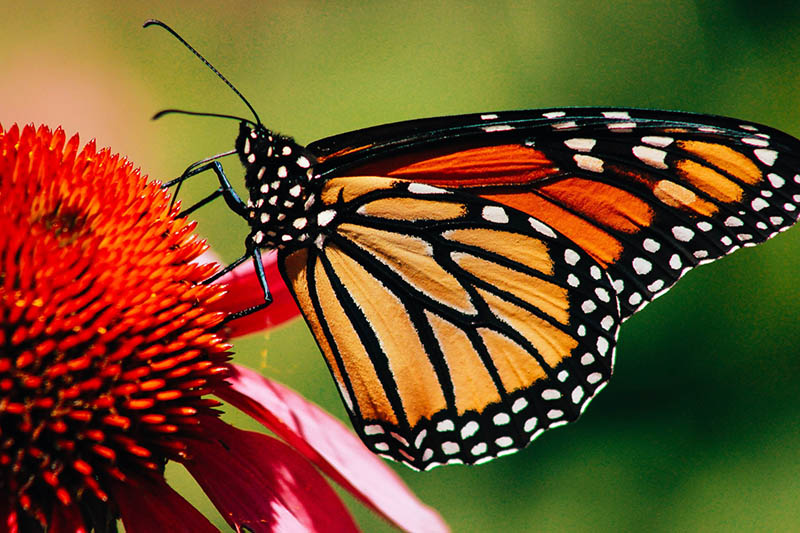
4. They’ve Been Raised in Space
These butterflies were one of the first to be hatched and raised on the International Space Station. There they successfully made it to their adult stage. However, flying is quite tricky in space (the primary reason they were chosen).
There are no plans to send these butterflies back to space, though.
5. They’re Named After a King
These butterflies were given the name “Monarch” as an honor to King William III of England. The butterfly’s primary color (orange) relates to the King’s title, “Prince of Orange.”
6. There are Three Species of Monarch Butterflies
While most people refer to “Monarch butterflies” as a group, there are three different types. The first type is found in North America. Some of these butterflies migrate, which is what the species is famous for.
The second type is found in tropical and subtropical regions of South America. It is believed that this species and the North American one were originally one species. However, the southern Monarch got separated from the northern species about 2 million years ago and evolved separately since then.
The third species is the Jamaican Monarch, only found in Jamaica.
Furthermore, there are several smaller subspecies and color variants within each of these larger species. Therefore, while monarchs are often thought of being a collected group, they differ a lot. There is even a white monarch found in Oahu, Hawaii.
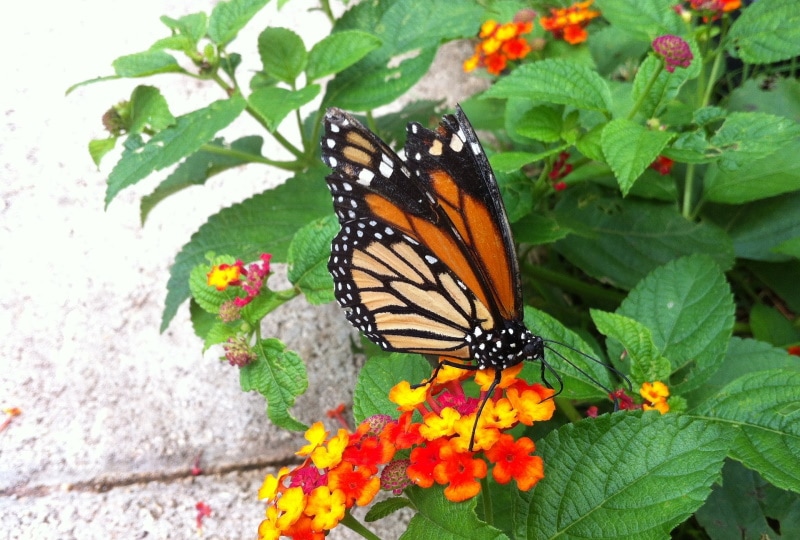
7. First DNA Sequenced
The Monarch was also the first butterfly to have its DNA sequenced completely. This genome was developed to give researchers insight into migratory patterns and hormone pathways. Researchers tried to find the difference between migrating and non-migratory butterflies. Why did some Monarchs migrate and others didn’t?
Surprisingly, the researchers found no genetic difference between these two species. However, the researchers found a gene that seemed to cause the migration. This gene was only “expressed” in migrating Monarchs. However, this does hint that non-migrating monarchs may have their genes “flipped on” at any time, which would prompt them to migrate.
8. Genetically Modified
Humans have not genetically modified the Monarch. However, the wasp bracovirus did millions of years ago. Researchers have identified parts of the Monarch’s genome that were evidentially modified by this parasite sometime during their evolutionary span.
Therefore, this species has sometimes been called the first genetically modified species.
9. Fewer Than 10% of Caterpillars Survive
There are a lot of dangers for caterpillars. For instance, extreme weather, parasites, diseases, and predators can kill thousands of caterpillars. These insects are also reliant on the milkweed as larvae. If something happens to the host plant, the caterpillars won’t survive.
Therefore, only about 10% of caterpillars make it to adulthood.
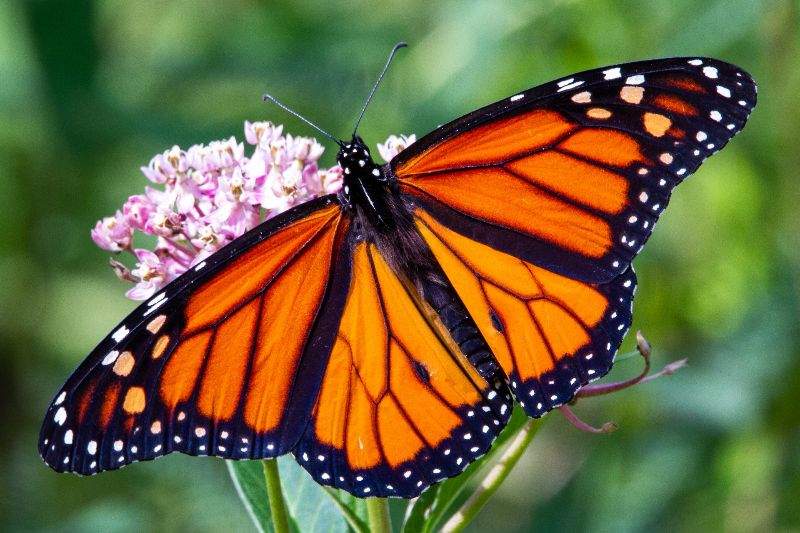
10. One Egg at a Time
While one female can lay 300 to 500 eggs over her laying period, she lays them one egg at a time. To lay that many eggs singularly takes about 5 weeks. During this period, the female will attach the eggs to the underside of milkweed leaves. She uses a sticky substance to help the egg attach.
In total, a female butterfly may lay 1,180 eggs over her lifespan. Each female can mate multiple times and go through several laying periods.
11. Caterpillars Molt Many Times
Often, people imagine that the caterpillar will simply eat and grow until they form a chrysalis. However, the Monarch caterpillar molts five times before they become large enough to become a butterfly. Each phase takes three to five days, depending on the weather and the amount of food available.
In the first stage, the caterpillar is only 2 to 6 mm long. However, the caterpillar will reach 4.5 cm long before it reaches the chrysalis stage. Some larger caterpillars may reach 5 cm.
12. They Can Be Aggressive
Butterflies aren’t usually seen as being aggressive. However, Monarch larvae can be aggressive if the amount of milkweed available is small. Caterpillars may be attacked by others when feeding on leaves. This may be one reason caterpillars will travel far away from the milkweed plants to form a chrysalis—they don’t want to be attacked in this weakened state.
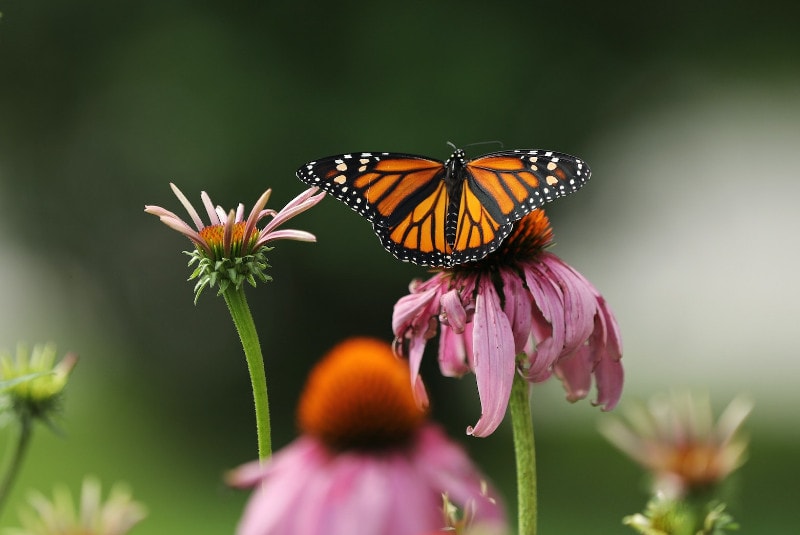
13. They Can See Ultraviolet
Surprisingly, the Monarch butterfly’s eyes are set up similarly to humans. Their retina contains three different kinds of proteins, just like humans. However, the Monarch butterfly’s proteins allow them to see green, blue, and ultraviolet. In humans, we can see green, blue, and red. Therefore, Monarch butterflies can see similar colors to us, though they cannot see any red shades.
14. Their Migration is Multi-Generational
While not all species migrate, those that do, don’t migrate all at once. Instead of traditional migration, where a single animal will travel to a different area and back again, Monarch migration occurs over several generations. One butterfly will travel a bit, lay eggs, and then the hatched butterflies will travel a bit.
Therefore, the butterflies don’t return to previous areas. Their lifespan is too short. However, their offspring will travel back to the areas the parents were from.
Researchers have found that this migration is genetic and linked to hormones.
15. Not All Milkweeds Will Do
Technically, Monarch butterflies will use any milkweed plant as their host plant. However, not all of them have the levels of toxins that butterflies and caterpillars need to ward off predators. Some milkweed plants do contain a different toxin, but this isn’t toxic enough to ward off all predators.
Therefore, if you want to plant milkweed for Monarch butterflies, plant the right kind.

16. Captive-Rearing Monarchs Isn’t Always a Great Idea
After the plight of the Monarchs is understood, more and more people have decided to rear Monarchs in their homes to help the population. However, this isn’t always a good idea. While rearing Monarchs in small amounts is fine, “mass rearing” may be more damaging than helpful.
When many Monarchs are kept together in a small area, the chance of parasites and diseases increases. Therefore, when released, these diseased Monarchs may affect the rest of the population. Furthermore, captive-raised Monarchs are often all related, which can lead to genetic problems.
Furthermore, captive-reared Monarchs are less likely to survive in the wild as the conditions they’re raised in do not mirror the wild. Often, they are in controlled conditions to ensure maximum growth and health. However, once released, these Monarchs aren’t prepared for the realities of their wildlife.
Monarchs reared in captivity have worse navigational capabilities. They also don’t migrate with the same success rate, which is to be expected due to their diminished navigational capacity.
In Conclusion
Monarchs may be one of the most well-known insects out there. However, there is a lot that the average person doesn’t know about them. Because they are endangered in some cases and so well-known, there is plenty of research about them. Therefore, we know a lot more about them than other species.
Plus, we are learning more about these butterflies every day. In the future, we’ll likely have even more interesting facts.
Featured Image Credit: emkaplin, Shutterstock
Contents
